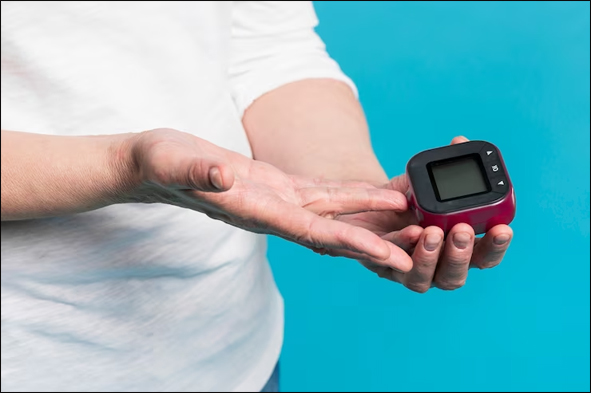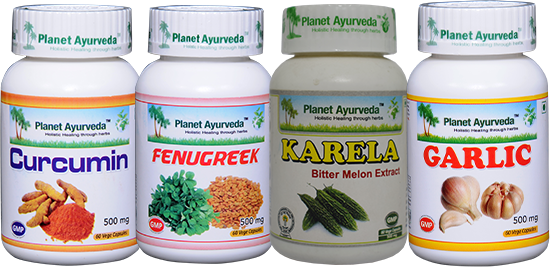Control Diabetes Naturally With Diet, Lifestyle and Herbs
Abstract
In 1974 diabetes mellitus was the fifth leading cause of death from disease in the United state. The prevalence of this condition has risen steadily and at a somewhat alarming pace. The number of known diabetics nearly doubled between 1950 and 1965 and increased another 50% between 1965 and 1973. The incidence appears to be increasing about 6% per year, and at this rate the number of people with diabetes will double every 15 years. Currently it is estimated that there are about 4.0 to 4.5 million known diabetics in the United States and an additional 5.5 million individuals destined to develop the disease during their lifetime. These awesome data reflect a number of factors, including better case finding, enhanced longevity of diabetics, improve salvage of diabetic infants who formerly died at an early age. The prevalence in each decade of life rises progressively. In this connection it is important to note that both fasting and postprandial blood glucose levels progressively rises throughout life, even so called normal individuals. There are two main factors for the increase: obesity and aged people. This article introduces diabetes in both modern and ayurvedic aspects along with ayurvedic treatment for prevention, control and management.
Introduction
Diabetes is a idiopathic or primary diabetes mellitus is a chronic disorder of carbohydrate, fat, and protein metabolism characterized in its fully expressed clinical form by fasting hyperglycemia, glycosuria, and a striking tendency toward development of atherosclerosis, microangiopathy, nephropathy, and neuropathy.

Causes
- While underutilization of glucose is characteristic of all diabetic patients, only some have a clearly defined deficiency of insulin, the large remainder suffer from some delay in or otherwise inappropriate insulin secretory response and/or resistance to insulin in the peripheral tissues. Excessive glucagon secretion may also play a role.
- Almost certainly idiopathic diabetes mellitus embraces a heterogenous group of disorders having in common disordered carbohydrate, fat and protein metabolism. At least two major as well as several less common variants of the disease have been identified. One major variant, insulin-dependent “juvenile-onset” ketosis-prone diabetes, accounts for about 5 to 10% of diabetics, non insulin-dependent “maturity onset” ketosis-resistant diabetes represents the remaining 90 to 95% of all diabetic patients.
- Hereditary influences contribute significantly to the development of both major variants of diabetes mellitus. While the precise nature and mode of inheritance are still uncertain, and regrettably there are no genetic “markers” the risk of acquiring the several variants of the disease is related to the extent of the hereditary input.
- Environmental influences such as pregnancy, obesity, and infection contribute significantly to the expression of the diabetic state.
- Idiopathic diabetes mellitus must be differentiated from the secondary types of diabetes or carbohydrate intolerance resulting from destruction of the pancreas by inflammation, trauma, surgery that encountered in hemochromatosis or in association with certain endocrinopathies such as acromegaly, cushing’s syndrome, hyperthyroidism etc. All these secondary forms are genetically unrelated to the primary disease, and whether they are associated with some tendency to the development of macro and microvascular disease is still somewhat uncertain.
- While the metabolic derangements may be life-threatening, or even fatal in insulin dependent diabetes mellitus, the major challenge today is the understanding and control of the frequently fatal long term effects of both major variants of this disease on the large and small vessels, sometimes referred to as the chronic vascular syndrome. There is no strict correlation between the severity of the carbohydrate intolerance and the development of these long term effects. Vascular lesions may occur with time in patients with mild carbohydrate tolerance or not appear for decades in some with severe metabolic disturbances.
Stages of Diabetes
There Are Four Stages of Diabetes
- Overt or manifest diabetes refers to the fully expressed clinical syndrome. This stage of the disease is characterized by fasting hyperglycemia, glycosuria, and usually the three- polyuria, polydipsia and polyphagia. The diagnosis is readily confirmed by an abnormal glucose tolerance test. Both insulin-dependent DM and decompensated non-insulin dependent DM may fall into this category.
- Subclinical diabetes is present when the patient is asymptomatic and the level of fasting blood glucose is usually normal, but the post-prandial level is frequently elevated. The glucose tolerance test even without stress is usually abnormal. This stage is common among maturity onset diabetics.
- Latent or stress diabetes refers to a person who is asymptomatic and under ordinary conditions is normoglycemic and has a normal glucose tolerance. Under stress temporary carbohydrate intolerance appears. Individuals with latent diabetes are at increased risk of developing overt disease, but most do not. This group also includes women who have delivered abnormally large, fat babies and are thus suspected of being diabetic. The compensatory hyperinsulinemia in the foetus of a diabetic mother leads to prenatal anabolic storage of fat.
- Pre-diabetes or potential diabetes is a conceptual state which can be applied only retrospectively to the period of time preceding carbohydrate intolerance. Based on the present belief that there is a hereditary component to diabetes, the term pre-diabetes has been used in reference to the non-diabetic identical twin of a diabetic patient. The same thinking applies to the offspring of two diabetic parents, although, as will be seen, the assumption that this disease is inherited as a mendelian recessive has yet to be established.
Types of Diabetes
Two Types of Diabetes Are
1. Type 1 (insulin-dependent/juvenile onset):-
It is an autoimmune disease. Ketosis-prone form of diabetes mellitus is generally acknowledged to be due to a lack of insulin. The pancreas contains little or no extractable insulin and has an overall reduction in beta cell mass, resulting from loss of islets, reduction in size of islets, or loss of beta cells. These patients therefore require exogenous insulin administeration, hence the term insulin-dependent.
2. Type 2 (non-insulin-dependent diabetes/adult onset diabetes)
It is characterized by defects in insulin secretion as well as insulin resistance, wherein insulin secreted is not effectively used by the body. It is not due to a reduction in beta- cell mass and insulin production but rather relates to some inappropriate insulin secretion-insufficient relative to the glucose load, or a delayed response.
Symptoms
- Polyuria :- causes dehydration
- Polydipsia :- due to dehydration
- Polyphagia :- protein, fat and carbohydrate metabolism get affected due to decreased insulin secretion.
- Weight loss
- Nausea
- Vomiting
- Infections of bladder, genital area and skin
- Blurred vision :- due to alterations in levels of blood glucose
- Lethargy
Risk Factors of Diabetes
- Genetic factors
- Faulty eating habits
- Pregnancy
- Infections
- Certain hormones
- Pharmacological agents
- Overweight
- Starvation and excessive caloric intake
- Sedentary lifestyle
- Age of the person
Diagnosis
- Fasting plasma glucose (more than 126 mg/dl)
- Random blood glucose (level of 200 mg/dl or higher )
- Glucose tolerance test :- after a fasting of overnight (8-12 hrs) blood sample taken, then glucose 75 g in adults or 1.75 g/kg of body weight in children, is orally administered. After two hours samples are collected and the blood glucose level is estimated.
- HbA1c :- used to detect type 2 diabetes and pre-diabetes but not recommended for diagnosis of type 1 diabetes or gestational diabetes.
Ayurvedic Overview
In ayurveda this disease is correlated with prameha in which doshas are kapha, pitta and vata and dushyas are medas, blood, semen, fluid, muscle fat, lymph, marrow, rasa, ojas and muscles. It is quoted as a maha vyadhi and becomes asadhyam if treatment is delayed. Prameha is described briefly in charak chikitsa sthana chapter 6.
Causes
आस्यासुखं स्वप्नसुखं दधीनि ग्राम्योदकानूपरसा: पयांसि।
नवान्नपानं गुड़वैकृतं च प्रमेहहेतु: कफ कृच्च सर्वं।। (च चि ६/४)
According to Charaka
- Idle sitting
- Oversleep
- Excessive use of curd
- Meat soup of the domestic, aquatic and marshy animals and milk
- New cereals and drinks
- Jaggery products and all other kapha-promoting regimens.
Types of Prameha
Ten Types of Kaphaja Prameha:- Where Urine Is
- Watery
- Like sugarcane juice
- Viscous
- Having solid precipitate
- White
- With semen
- Cold
- With slow impulse
- Saliva-like
- With gravels
Six Types of Pittaja Prameha:- Wherein The Urine Is
- Like akali
- Black
- Blue
- Yellow like haldi
- Light red like manjistha
- Deep red
Four Types of Vata Prameha:- Urine Is
- With majja
- With ojas
- With vasa
- With lasika
Symptoms
तत्राविलप्रभूतमूत्रलक्षणा: सर्व एव प्रमेहा: (सु. स. नि. ६/६)
According to Sushruta
- Avila mutra-Turbid/unclear
- Prabhut mutra-Excessive urination is the symptom of all prameha roga.
Control of Diabetes Naturally with Diet, Lifestyle and Herb
Diet
- Cereals:- whole wheat, rice, oats, cornmeal, barley and whole grain cereals
- Fruits:- apple, avocado, orange, banana, blackberry, peach, melon, amla, plum, apricot, pomegranate, loquat
- Vegetables:- cauliflower, peas, cabbage, okra, eggplant, mint, turnip, carrot, broccoli, capsicum, bottle gourd, radish, pumpkin, round gourd, mushroom, green beans, spinach, coriander, pepper, fenugreek leaves, curry leaves, cucumber, beetroot, green chilli, ginger, bitter gourd.
- Pulses:- all split lentils and legumes
- Dairy products/protein:- tofu, cheese and peanut butter can be used as meat substitutes. Only a total number of six ounces of protein spread into two meals is your maximum requirement of the protein in one day.
- Spices:- fennel, turmeric, pepper, ginger, cinnamon, cumin, coriander
- Salt:- saindhav (rock salt) salt. Iodised salt is only required by persons residing in low iodine regions or have hypothyroid
- Drinks:- herbal tea, amla juice, bitter gourd juice, coconut water, giloy juice, bottle gourd juice, neem juice
- Flesh foods:- chicken soup, egg white, fish
- Seeds and dry fruits:- walnuts, almond, chia seeds, basil seeds, flax seeds, pumpkin seeds, sesame seeds
- Oils:- soybean oil, olive oil, canola oil, sesame oil, cow ghee (little amount)
Lifestyle
- Don’t skip your meal specially breakfast
- Do not eat foods or do acts which are antagonistic in nature
- Have disciplined meals and never ever eat anything before the previous meal is digested
- Eat always two-third full stomach and never fill yourself up to brim
- Purify your body daily with simple specific water drinking method
- Never consume food under stressful circumstances
- Regular physical exercise
- Do aerobic exercise
- Lose your weight with yoga and healthy diet
- Drink herbal tea at least twice a day
- Sleep properly with time
- Don’t take any stress
- Stop smoking
- Avoid alcohol intake
- Take meal at same time everyday
- Drink more water
- Avoid long sitting and standing position
Herbs
- Rosemary :- It helps in reducing weight and also controls blood sugar levels.
- Ginseng :- It is an anti-diabetic herb which stimulates insulin production by the pancreas.
- Aloe vera :- It used to reduce inflammation and helps in indigestion. It is also used in the management of diabetes.
- Ginger :- It is a widely used herb at home cooking. It helps in enhancing insulin production.
- Fenugreek :-It lowers the serum lipid level besides helping in the weight reduction.
- Neem :- Chewing 4-5 leaves of neem regularly helps in hyperacidity and diabetes.
- Bitter gourd:- It regulates the blood sugar level.
- Cinnamon :- It is capable of reducing both cholesterol level and blood sugar in the body.
- Flax seeds:- It improves the blood glucose level.
- Onion and garlic:- Both herbs are used in diabetes to lower the blood glucose level.
- Holy basil:- It increases the insulin secretion.
- Curcumin :- It is very useful in diabetes.
- Amalaki (emblica officinalis) :- It acts as a rejuvenator which pacifies all three doshas-vata, pitta and kapha.
Herbal Remedies For Diabetes by Planet Ayurveda
Planet ayurveda promotes various herbal medicines for many diseases. They strictly follow all the principles of ancient ayurvedic textbooks. All the ayurvedic medicines are GMP certified and 100% natural and pure. Herbs which are used in medicines are highly effective in various diseases. All medicines are free from chemicals, preservatives and safe for the human body. Planet ayurveda provide herbal remedies for diabetes which are:-
- Garlic capsules
- Karela capsules
- Fenugreek capsules
- Curcumin capsules
Product Description
1. Garlic Capsule
It is a single herbal capsule which is made from garlic (allium sativum). It is hot in potency and pungent in post digestive effect. This is unctuous, sharp and heavy. It pacifies kapha and vata, but aggravates pitta. It contains protein, carbohydrate, sulphur, calcium, iron and phosphorus. It acts as an effective immune-stimulant, anti-viral, anti-cholestrol, cardio-vascular tonic and also as a tumor inhibiting medicine. It keeps cholesterol and triglycerides level under control and acts as an antioxidant. It reduces body toxins besides controlling the lipid profile.
Dosage : 1-2 Capsules twice daily, with plain water, after meals.
2. Karela Capsule
It is a single herbal capsule containing Karela (Momordica charantia). It balances both kapha and pitta dosha in the body. It contains antimicrobial and antioxidant properties. It expelled out the toxins from our blood and liver. It lowers the blood sugar level in the blood. It contains vicine, glycoside, and polypeptide which helps in improving the level of blood glucose. It is capable in lower the cholestrol and blood pressure level. It helps in wound healing and reduction of weight which is very important in diabetic patient. It boosts our metabolism system and improves our digestive function. It also purifies our body naturally
Dosage:-1-2 Capsules twice daily, with plain water, after meals.
3. Fenugreek Capsule
It is a single herbal capsule containing Fenugreek (Trigonella foenumgraecum). It is bitter in taste and light, unctuous and hot in effect. It aggravates pitta but pacifies vata and kapha. It contains vitamins, protein, carbohydrate and minerals. It acts as an anti inflammatory, anti-flatulant, and mildly laxative. It promotes lactation in post delivery cases and control bodyaches. It contains good anti diabetic properties. It also helps alleviate colic problems due to retention of gas. It is very useful in indigestion, and sluggishness of the liver
Dosage:– 1-2 Capsules twice daily, with plain water, after meals.
4. Curcumin Capsules
It is a single herbal capsule made from haridra (curcuma longa). It is bitter and pungent, light, dry and hot in effect. It alleviates kapha and vata. It acts as digestive, astringent, and anti-diabetic. It is very useful in skin allergy because it helps to purify the blood. It contains vitamin A, protein, minerals and carbohydrates. It is an effective remedy for sprains, wounds and inflamed joints. It is used in a number of diseases like acne, burns, auto-immune disorders and liver diseases. It prevents colon and skin tumors. It improves the complexion.
Dosage : 1-2 Capsules twice daily, with plain water, after meals.
Conclusion
Diabetes is a metabolic disorder in which glucose level is high in blood. In ayurveda it is referred as prameha (diabetes) in which all three doshas (vata, pitta, kapha) are involved. We can manage it with effective herbs like fenugreek, curcumin, haridra (curcuma longa), aloe vera, amla, bibhitaki (terminalia bellirica), haritaki (terminalia chebula), garlic, bitter gourd, basil etc. We can manage this condition by lifestyle changes, change in faulty diet habits, regular exercise etc.






